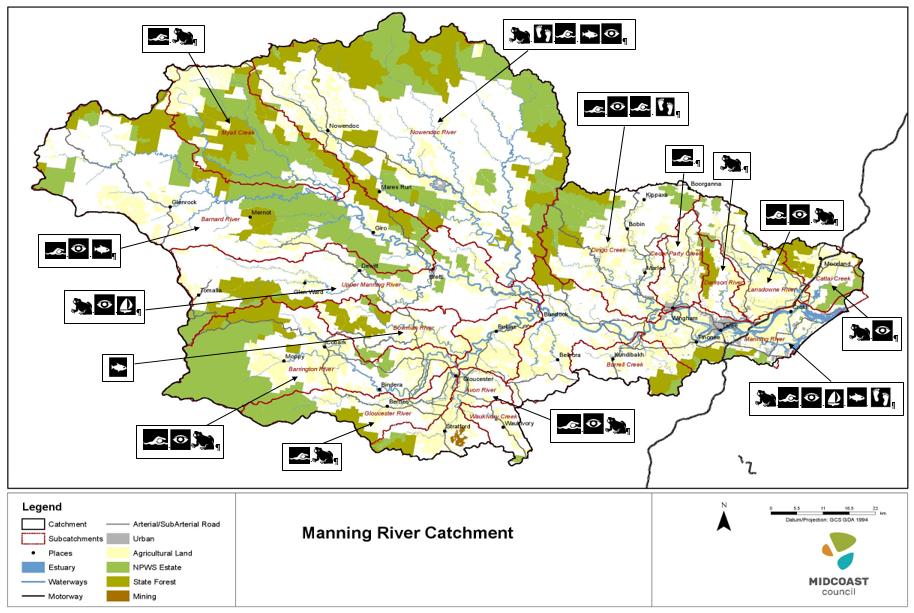7. Management Actions “People will move here and invest here if they know we are committed to looking after the river.” Ian Crisp, oyster grower, Manning River ECMP Reference Group
The following Management Actions were developed to respond to risks and threats, address the issues and achieve our objectives. They were derived from several consultation inputs: •
One-on-one interviews with members of the Manning River ECMP Reference group;
•
A series of 13 issue analysis discussion groups with members of the Technical Advisory Group and delivery partners;
•
A series of 9 workshops with internal and external delivery partners to firm up the details of the management options, assess whether they belonged in the ECMP Action Program, complementary programs or could be amalgamated, and convert them to S.M.A.R.T format (Smart, Measurable, Achievable, Timely).
Additional detail that will assist practitioners to understand the context and intention of the actions is provided in Annexure J: Manning River ECMP Management Actions with Practice Notes.
Evaluation of management options A structured and transparent evaluation of management options against the three broad themes of feasibility, viability and acceptability is required by the Coastal Management Manual. MidCoast Council’s project team managed acceptability evaluation while a team of consultants led by Salients undertook the feasibility and viability evaluation. Consultancy firm Salients (Dr. David wainwright) led the evaluation of feasibility and viability. The method and results of the evaluation process are outlined below and shown in Figure 35. The full evaluation report is provided in Annexure K: Report: Evaluation of management options for the Manning River ECMP (Salients 2021). The feasibility evaluation considered whether the actions could be completed in technical, engineering and/or legal terms. As a first stage of the feasibility assessment every management option was subjected to a multi-criteria assessment. The purpose of an ECMP is to give effect to the objectives of the Coastal Management Act 2016. For this reason, the objects/objectives of the CM Act and, by extension, the Marine Estate Management Act 2014 were used as the criteria against which each of the management options were assessed. Where options were identified as being suitable for direct progression (typically low cost, low regrets, high confidence of success), the multi criteria assessment was applied as a confirmatory feasibility assessment.
Manning River ECMP Exhibition Draft V2 June 2021
Page 94






















